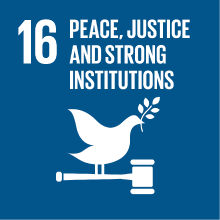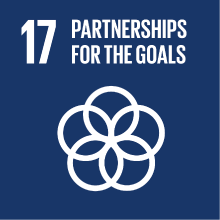BYZANTINE HISTORY
- Academic year
- 2021/2022 Syllabus of previous years
- Official course title
- STORIA BIZANTINA
- Course code
- FT0189 (AF:312330 AR:186178)
- Teaching language
- Italian
- Modality
- On campus classes
- ECTS credits
- 6
- Degree level
- Bachelor's Degree Programme
- Academic Discipline
- L-FIL-LET/07
- Period
- 2nd Term
- Course year
- 3
- Where
- VENEZIA
- Moodle
- Go to Moodle page
Contribution of the course to the overall degree programme goals
The course of Byzantine History is the natural development of the courses of Greek and Roman History and the twin of the courses of Medieval History. It allows students to reach a complete knowledge of the history of the Middle Ages, the problems of the periodization of the late antique and middle ages, the historiographical debates in progress of a discipline that is still, partially, an unexplored field of research.
Expected learning outcomes
- Understand the influences and the cultural heritage of the Byzantine Empire.
- To develop a critical and independent approach to a diverse range of sources, both primary and secondary, and develop analytical skills in critically evaluating this material in an autonomous way.
Pre-requirements
Contents
segreto e ambiguo come questa vita,
Bisanzio è un mito che non mi è consueto,
Bisanzio è un sogno che si fa incompleto,
Bisanzio forse non è mai esistita...
(F. Guccini, Bisanzio, 1981)
--------------------------------------------------------------------
The module on Byzantine History (I and II) introduces the students to the History of Byzantium covering the entire millennium of its development (330-1453). In particular, the course of Byzantine History I focuses on the period between 330 and 1204. Among the topics discussed during the course students will be introduced to the passage from Late Antiquity to the Middle Ages, the development of Latin and Greek Europe, the safeguard of the classical heritage, the role of the Church.
1. Introduction to the Byzantine History. Empire - Orthodoxy - Hellenism: analysis and discussion.
2. The Byzantine studies: developments of a young field of research
3. Sources and methods for Byzantine History /1
4. Late antiquity and periodization of Byzantine history: transition from the Roman Empire to the Eastern Roman Empire: from Constantine (330) to Justinian (527)
5. Ruling the Mediterranean: Justinian (527-602) and his successors
6. The “resilient” empire (602-717): the rise of Islam and the crises of 7th and 8th centuries
7. Sources and methods for Byzantine History /2
8. The Christendom from Late Antiquity to the Triumph of Orthodoxy (843)
9. The Macedonian splendor (867-1056)
10. The crisis of the eleventh century and the rise of the papacy (1054-1081)
11. The dynasty of the Komnenoi and the first four Crusades through the Byzantine eyes (1081-1204)
12. The Latin domination (1204-1261), the reconquest of Constantinople and the end of the medieval empire
13. 1261-1453, the Paleologan emperors, the civil wars and the relationship with the Latin West
14. Byzance après Byzance
15. Final Discussion
Referral texts
Together with some chapters of your choice from one, or more, of the following volumes:
Treadgold, W., Storia di Bisanzio (Bologna, 2005)
Ducellier, A. - Kaplan, M., Bisanzio, 4.-15. secolo (Cinisello Balsamo, 2005)
Gregory, T. E., A history of Byzantium (Malden, MA, 2005)
Haldon, J., Byzantium: A history, (Stroud, 2005)
Gallina, M., Bisanzio. Storia di un impero (secoli IV-XIII), (Roma, 2008)
Stathakopoulos, D., A Short History of the Byzantine Empire (London, 2014)
Di Branco, M., Breve storia di Bisanzio (Roma, 2016)
Kaplan, M., Pourquoi Byzance? Un empire de onze siècles (Paris, 2016)
Harris, J., Introduction to Byzantium, 602–1453 (Abingdon, 2020)
********************************************************
Further readings:
“The Oxford Dictionary of Byzantium” ed. by A. P. Kazhdan, 3 voll. (Oxford, 1991)
“The Oxford Handbook of Byzantine Studies”, ed. by E. Jeffreys, J.F. Haldon and R. Cormack (Oxford, 2008)
“A Companion to Byzantium”, ed. by L. James (Chichester, 2010)
“The Byzantine World”, ed. by P. Stephenson (London, 2010)
“Le monde byzantin” published by Presses Universitaires de France (PUF): I, L’Empire romain d’Orient (330-641), ed. by C. Morrisson (Paris, 2004); II, L’Empire byzantin (641-1204), ed. by J.-C. Cheynet (Paris, 2006); III, L’empire grec et ses voisins XIIIe-XVe siècle, ed. by A. Laiou e C. Morrisson (Paris, 2011).
“The Cambridge Ancient History”, Vol. 13, The Late Empire, AD 337–425, ed. by A. Cameron and P. Garnsey (1998) and Vol. 14, Late Antiquity: Empire and Successors, AD 425–600, ed. by A. Cameron, B. Ward-Perkins e M. Whitby (2001)
“The Cambridge History of the Byzantine Empire c. 500–1492”, ed. by J. Shepard (2009).
“The New Cambridge Medieval History”, Vols 1-7, covers the period 500–1500 (1998-2005).
Assessment methods
Oral examination 70% + Essay 30%. These are the "Marking Criteria":
30 cum laude
Overall
Outstanding answer: exceptionally well structured and informed, showing striking personal insight and originality.
Understanding
Authoritative; full understanding of relevant material; highly original analysis; highly independent and critical judgment; high degree of precision.
Selection & Coverage
Unusually extensive range of sources, applied with outstanding insight; exceptionally effective use of evidence to support argument.
Structure of the essay
Excellent structure, focus, presentation and writing style, contributing to a highly compelling argument.
29-30/30
Overall
Highly thoughtful answer informed by wider reading, showing clarity of thought, personal insight and originality.
Understanding
Thorough understanding of relevant material; insightful discussion; evidence of independent and critical judgment.
Selection & Coverage
Extensive range of sources applied insightfully; very effective use of evidence to support argument.
Structure of the essay
Very good structure and focus; clear and fluent writing style; compelling argument.
28-29/30
Overall
Thoughtful answer informed by wider reading, showing clarity of thought and personal insight.
Understanding
Thorough understanding of relevant material; insightful discussion and analysis.
Selection & Coverage
Extensive range of sources applied insightfully. Effective use of evidence to support argument
Structure
Well structured and focused; clear and fluent writing style; persuasive argument.
27-28
Overall
Good understanding of relevant material; coherent and logical argument.
Understanding
Good understanding of important facts and concepts; substantive analysis of key issues.
Selection & Coverage
Good use of relevant sources/literature; employment of a range of evidence to support argument.
Structure
Coherent and logical presentation.
26-27
Overall
Sound understanding; limited analysis.
Understanding
Generally sound understanding of relevant material but limited range or depth; more descriptive that analytical.
Selection & Coverage
Appropriate but limited use of sources/literature; attempts to support argument, but these are awkward and/or unconvincing.
Structure
Generally clear presentation but awkward structure and/or limited development of argument.
23-25
Overall
Basic understanding and analysis.
Understanding
Some general knowledge but little detail; minimal demonstration of analytical thought.
Selection & Coverage
Sparse coverage of basic material; generally unsuccessful in using evidence to support argument.
Structure
Adequate structure and presentation, but unclear or disorganized in places.
18-23
Overall
Unsystematic, incomplete and/or inaccurate.
Understanding
Some knowledge but poor understanding; numerous inaccuracies; meaning often unclear; poor analysis.
Selection & Coverage
Inappropriate and/or very minimal use of sources/literature; poor use of evidence to support argument.
Structure
Disorganised and unclear presentation; consistently poor spelling and grammar; incoherent argument; unacceptably brief.
Type of exam
Teaching methods
Students are expected to read the necessary primary and secondary sources.
Review of 3.000 words (font 11, line spacing 1) including footnotes, excluding bibliography of an article or a chapter suggested/approved by the teacher. Students who do not follow the lectures must fix an appointment with the teacher in order to agree upon bibliography and title of the essay.
Further information
Students employed in a full time job, and those who cannot attend classes for serious health / disability reasons, must integrate the preparation with:
- the readings available on the MOODLE page of the module
- Ducellier, Alain, Michel Kaplan. Byzance, IVe-XVe siècle. Paris: Hachette, 1996
THESIS:
Students wishing to dedicate their thesis to the Byzantine world are requested to send an email (alessandra.bucossi@unive.it) containing:
1) A short profile / CV
2) The study plan with indication of the exams already taken
3) A motivational letter (maximum one page) containing the reasons for choosing Byzantine history and an indication of a range of topics of particular interest to the candidate.
2030 Agenda for Sustainable Development Goals
This subject deals with topics related to the macro-area "International cooperation" and contributes to the achievement of one or more goals of U. N. Agenda for Sustainable Development


